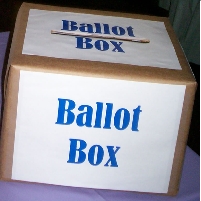Are Congressional Districts with Prisons Overrepresented?
Saturday, April 17, 2010
 (photo: Violet Patch of South Florida)
(photo: Violet Patch of South Florida)
The United States has more than two million phantoms voters, thanks to the way the U.S. Census Bureau counts prisoners. During the 2010 census, federal officials will record inmates as residents of the towns where their prisons are located, and they will remain there as far as the Census Bureau is concerned until the next headcount in 2020, even if they’re discharged sometime this decade.
The result of this census oddity is that legislative districts with penitentiaries get an extra number of official residents, which affects how political boundaries are drawn during the next reapportionment. Because prisons tend to be located in rural areas that tilt Republican, GOP lawmakers enjoy the benefit of having these added “constituents”—who often can’t even vote because of the crimes they’ve committed.
Peter Wagner, director of the Prison Policy Initiative, has called on the Census Bureau to change the way it counts inmates by recording them as residents of the towns they are from, instead of the communities where their prison is situated.
On Tuesday (April 13), Maryland became the first state enact a law that, for the purposes of drawing state legislative districts, counts prisoners as residents of their home addresses.
-Noel Brinkerhoff
Prison-Based Gerrymandering Creates Phantom Voters (by Yana Kunichoff, Truthout)
Maryland Enacts Law to Count Incarcerated People at Their Home Addresses (by Peter Wagner, Prisoners of the Census)
- Top Stories
- Unusual News
- Where is the Money Going?
- Controversies
- U.S. and the World
- Appointments and Resignations
- Latest News
- Musk and Trump Fire Members of Congress
- Trump Calls for Violent Street Demonstrations Against Himself
- Trump Changes Name of Republican Party
- The 2024 Election By the Numbers
- Bashar al-Assad—The Fall of a Rabid AntiSemite






Comments